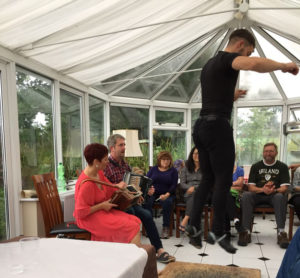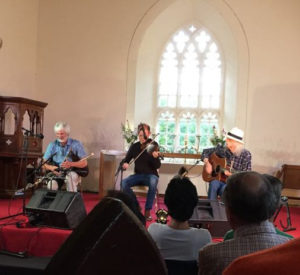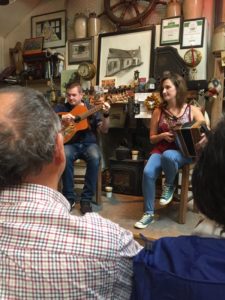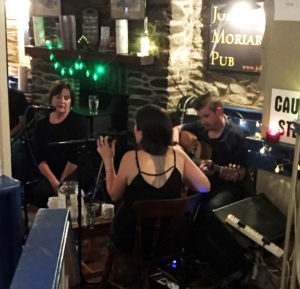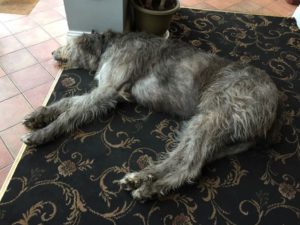I sat down on the bank above the beach where I had a splendid view all around me. Dead indeed is the heart from which the balmy air of the sea cannot banish sorrow and grief.

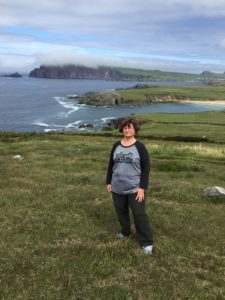
Stretching 30 miles into the Atlantic from Ireland’s southwest coast, the Dingle Peninsula has emerged as one of the country’s most popular travel destinations. Its attractions are impressive: beautiful coastal scenery, beaches suitable for swimming and surfing, extensive hiking and biking trails, a rich music tradition, arts and crafts workshops and festivals, and a selection of excellent food and drink establishments. The area is rich in Irish history, from neolithic monuments, to early Christian oratories and beehive huts, to the Blasket Islands that supported a small farming and fishing community from medieval times until the mid-20th century. Dingle is also one of the largest Gaeltacht regions in Ireland, where the Irish language is preserved, taught, and widely spoken in daily life. We arrived at Milltown House, a short walk from the Dingle town centre, in the late afternoon and were officially welcomed by Irish wolfhounds Seamus and Saoirse. The relaxing atmosphere was immediately felt (and appreciated!) as hostess Deirdre and her staff began our three night stay with a pre-dinner glass of bubbly, followed by a buffet dinner and inhouse concert of music and dancing, and a nightcap in the “Robert Mitchum Library Bar” (Mitchum stayed here while filming Ryan’s Daughter). It was the perfect way to celebrate my birthday!
Our first orientation tour included a visit to Dingle Crystal, a family concern where Sean Daly and company demonstrated the meticulous skill needed to create their stunning hand-cut designs. We then drove around Slea Head with stops to photograph and appreciate the coastal views, lunch at the Blasket Island Centre, and have a guided tour of the early Christian period Gallarus Oratory and 12th century Kilmalkedar Church.
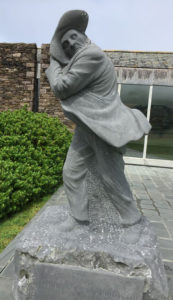
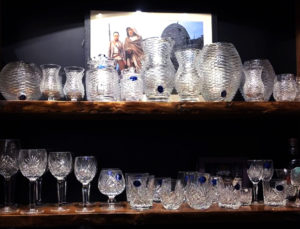
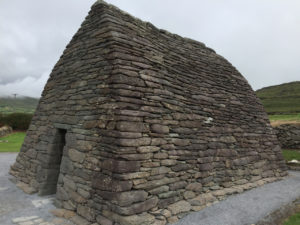
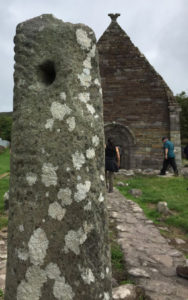
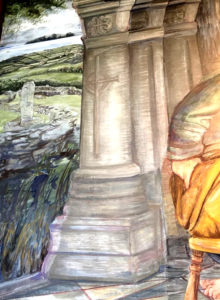

Stephen McPhilemy, noted Dingle guide (and co-owner of Milltown House) also led us (complete with doggie attendants) on a walking tour of Dingle Town, up and down the winding streets and alleys filled with shops, art galleries, and pubs. A visit to the former convent of The Sisters of the Presentation of the Blessed Virgin Mary (now the Díseart Institute) was a delight. Founded by Nano Nagle in 1775, the community established their Dingle convent in a stately neo-gothic building designed by J.J. McCarthy in 1829. The chapel contains a collection of striking Harry Clarke stained glass windows, and a huge mural by Eleanor Yates in the Sisters Dining Room portrays the Last Supper with a twist: all of the faces are those of Dingle residents and visitors, with dolmens and local scenery visible around the edges of the scene. In a park adjoining the convent, a peaceful cemetery under a beech tree marks the sisters’ final resting place.
Dingle is known for its music, and we were able to attend a concert each evening during our stay. St. James’ Church on Main Street hosts regular concerts in an intemate setting; we enjoyed several lively sets, both instrumental and vocalists accompanied by fiddle, flute, guitar, whistles and Uillean pipes. Another popular venue is the Dingle Music Shop (Siopa ceoil an Daingin), which offered Irish coffees during the break. Lorri, Steph and I made a stop at John Moriarty’s Pub afterwards for more music to end our evening and our Dingle visit.
